- Home
- Fishing Techniques
- Bottom Fishing
Rigs and Techniques for Successful Bottom Fishing
A good bottom fishing rig places your baited hook directly on, or within a few inches of the seabed, just where those fish that spend their lives poking around down there will be looking for it.
These fish are known as 'demersal' fish, and in the temperate waters around the UK will include the various flatfishes (plaice, flounders, dabs, soles, megrim, brill and turbot), skates and rays, cod, pout whiting, gurnard, dogfish and conger eel.
The primary food that these fish will be looking for are marine worms, shellfish, crustaceans and other smaller fish.
Preferred baits for these fish will be live ragworms and lugworms, strips cut from a fillet of an oily fish such as a mackerel, and small live baitfish.
Fishing Rigs for Bottom Feeding Fish
The main bottom fishing rigs for these species are:~
The Running Ledger Rig
This is the rig to use from an anchored boat, particularly in a tidal current. The sinker must be of sufficient weight to hold bottom, but no more. Often, as here, a dropper is attached to pick up those fish feeding off the bottom. It's equally appropriate for being cast from the shore, in which case a spiked lead may be used to hold the rig in place. |
Read more about bottom fishing with a running ledger rig...
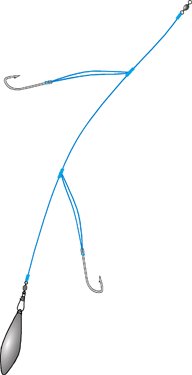 |
The Paternoster or Flapper Rig
A simple rig this, ideal for fishing from a pier, or an anchored boat at slack water, or from a boat drifting in the current. It too can be cast from the shore, but a biting fish is more likely to feel the resistance of the lead than with the running ledger rig. The droppers - no more than three - should be spaced such that one can't become tangled with the one above or below it. |
Read more about bottom fishing with the paternoster rig...
The Flatfish Rig
This special rig is best fished from a drifting boat over a clear sandy bottom. The coloured beads and the spoon seem to excite the flatfish, drawing their attention the bait following closely astern. The length of the trace should be much longer than shown here in this indicative sketch. 12 to 15 feet would be about right, to avoid the sinker spooking the fish as it drags over the seabed. |
Read more about bottom fishing with this specialised flatfish rig...
Bottom Fishing with Live Bait
There's one version of bottom fishing that's often overlooked - fishing with a small live fish bait.
Fishing with live bait is seen by some people as being unnecessarily cruel, but there's no doubt that it's a very effective way of catching predatory fish. The concern is that the live baitfish suffers twice - once as a result of being impaled on a hook, and again in being unable to attempt escape when a predator is around. The debate continues, but the decision is yours to make.
The Atlantic Cod is a bottom feeding fish much sought after by UK anglers. Lugworm and crabs feature strongly in its diet - and so do small fish. Pout whiting (or pouting) frequent the same type of ground as cod, and hence this is one of the small fish that often finds itself on the wrong side of the food chain - from the pouting's viewpoint anyway. Consequently, if you catch a small pouting and aren't averse to livebaiting you should try it as livebait for cod, using the pennel rig to attach it.
But there is another way...
Using their normal cod terminal rig, some anglers attach to the hook another smaller hook on a very short trace - not more than an inch (25mm) or so. They bait this with a small piece of bait - fish strip or worm - leaving the main hook bare.
The idea is that a pouting is caught on the small hook, and in its struggle to get free, attracts the attention of a cod. Said cod swallows the unfortunate pouting, engulfing as he does so the main hook.
A good plan, but there's a flaw...
In practice, not having read the rules, a dogfish or a codling gets the small bait and the angler, believing he's got a pouting about to do its job, leaves well alone.
Result? A long wait and no cod.
The same technique works equally well (or equally doesn't, for the same reason) when livebaiting for conger eels.
Next:~ How to tie the Best Bottom Fishing Rigs...
Recent Articles
-
Sea Fishing Rods and Reels Must Be Compatible for a Balanced Outfit
Mar 08, 21 08:30 AM
A quality reel fitted to a quality rod doesn't necessarily make it a quality outfit. Your fishing rods and reels have to be properly matched if you're to get the best out of them, and here’s how -
Essential Lure Fishing Tips That All Saltwater Anglers Should Know
Mar 08, 21 04:51 AM
Which single lure fishing tip applies to trolling, jigging, baitcasting, spinning, fly fishing and any other branch of lure fishing? Well, it is the one at the top of this list -
Vital Jig Fishing Tips That You Really Cannot Afford To Miss!
Mar 07, 21 10:20 AM
Essential jig fishing tips to help you select the right lure for successful jig fishing, together with the techniques required to get the most out of your jig fishing outfit
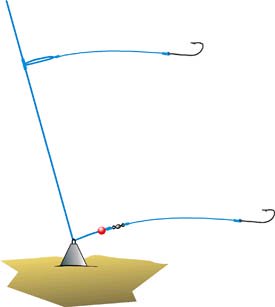
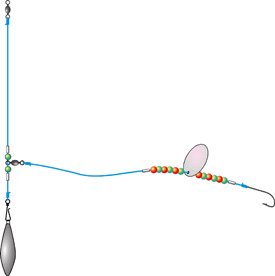












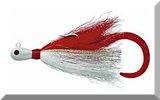
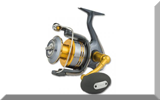
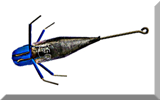
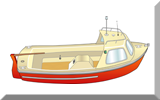
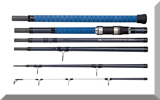
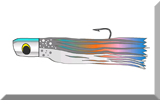
New! Comments
Have your say about what you've just read! Leave me a comment in the box below.